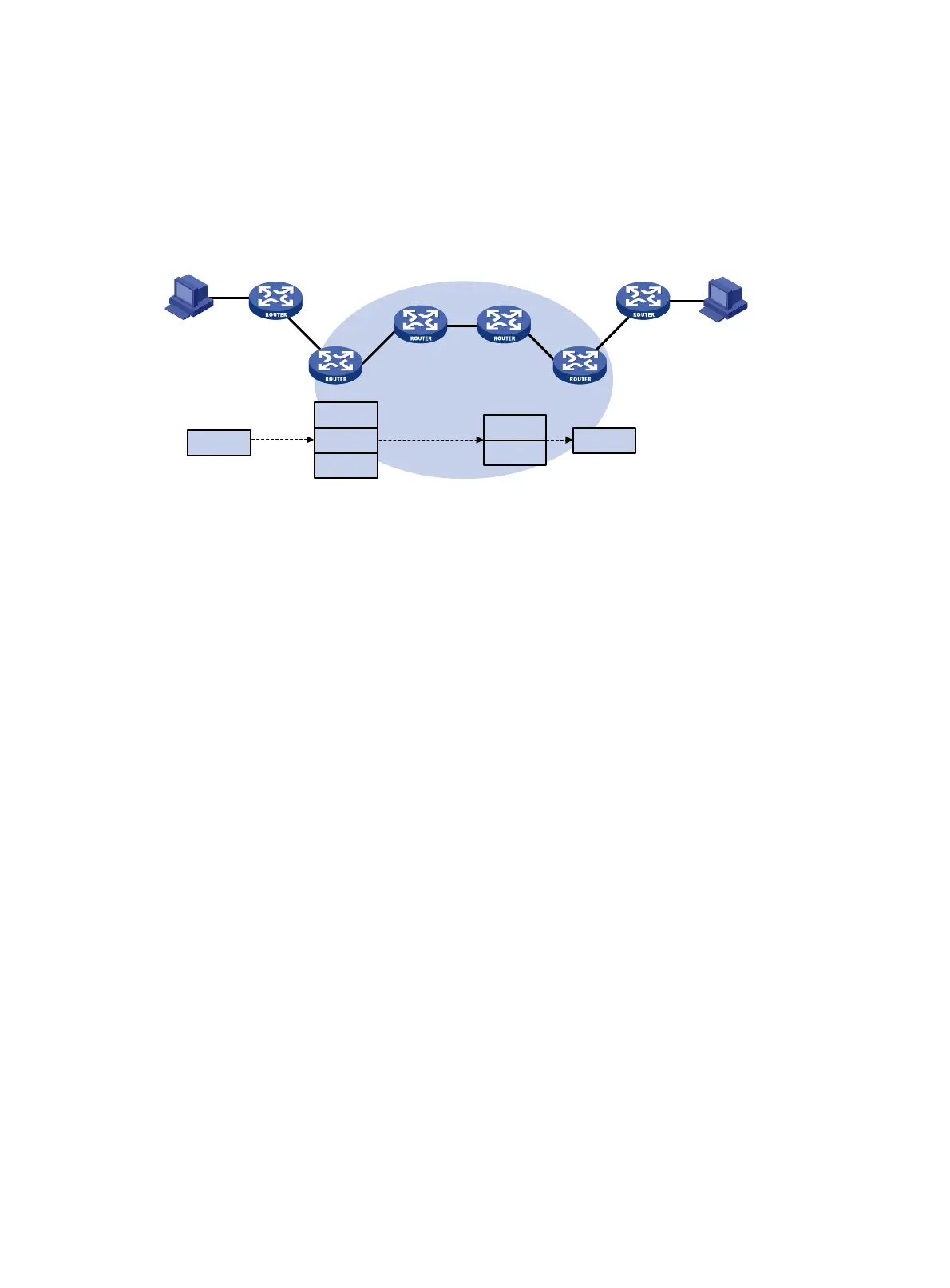232
• Layer 2 labels—Inner labels, used for forwarding packets from the remote PEs to the CEs. An inner
label indicates to which site, or more precisely, to which CE the packet should be sent. A PE finds
the interface for forwarding a packet according to the inner label.
If two CEs belong to the same VPN and are connected to the same PE, each CE only needs to know how
to reach the other CE.
Figure 15 VPN packet forwarding
A VPN packet is forwarded in the following way:
1. Site 1 sends an IP packet with the destination address of 1.1.1.2. CE 1 transmits the packet to PE
1.
2. PE 1 searches VPN instance entries based on the inbound interface and destination address of the
packet. Once finding a matching entry, PE 1 labels the packet with both inner and outer labels and
forwards the packet out.
3. The MPLS backbone transmits the packet to PE 2 by outer label. The outer label is removed from
the packet at the penultimate hop.
4. PE 2 searches VPN instance entries according to the inner label and destination address of the
packet to determine the outbound interface and then forwards the packet out the interface to CE 2.
5. CE 2 transmits the packet to the destination by IP forwarding.
MPLS L3VPN networking schemes
In MPLS L3VPNs, route target attributes are used to control the advertisement and reception of VPN
routes between sites. They function independently and can be configured with multiple values to support
flexible VPN access control and implement multiple types of VPN networking schemes.
Basic VPN networking scheme
In the simplest case, all users in a VPN form a closed user group. They can forward traffic to each other,
but cannot communicate with any user outside the VPN.
For this basic VPN networking scheme, you must assign a route target to each VPN for identifying the
export target attribute and import target attribute of the VPN. Moreover, this route target cannot be used
by any other VPNs.
CE 1Site 1
PE 1
PP
PE 2
CE 2
Site 2
2.1.1.1/24
1.1.1.2/24
1.1.1.2
1.1.1.2
Layer2
Layer1
1.1.1.2
Layer2
1.1.1.2
